Antepavilion building "smashed up" and staff arrested in police raid on Extinction Rebellion workshops
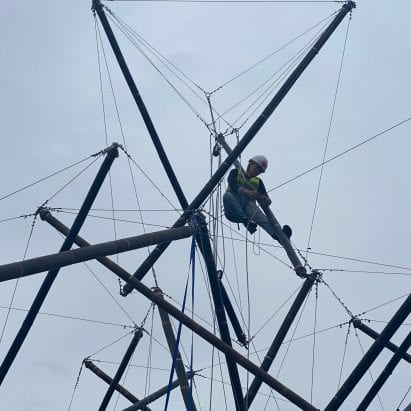
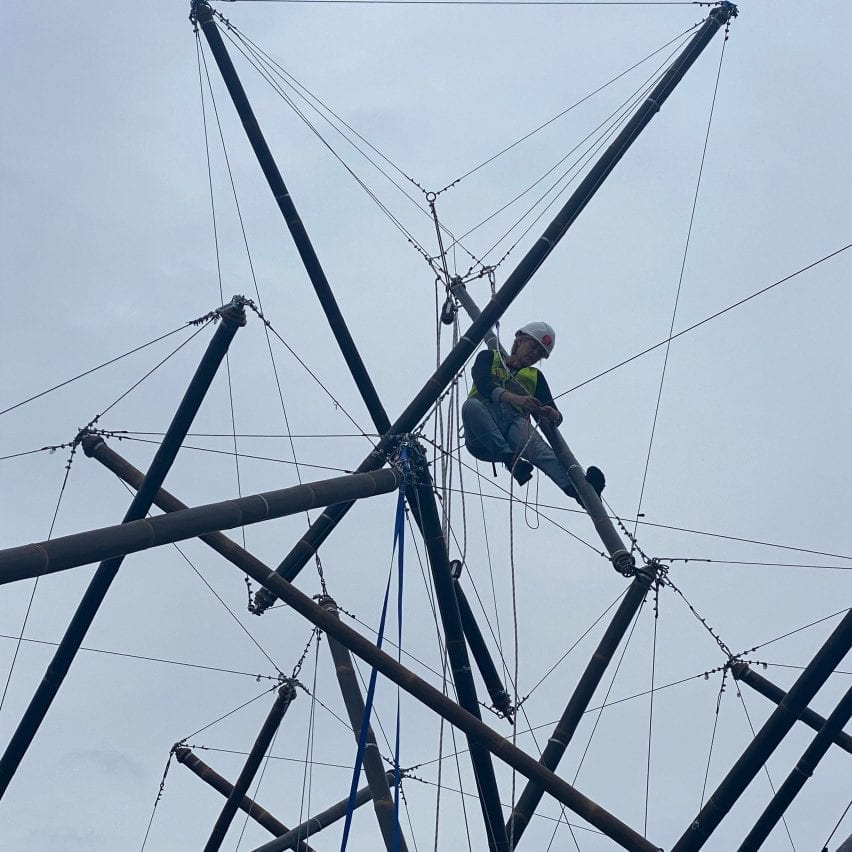
Police have raided the building that hosts the annual Antepavilion architecture commission, arrested a number of its staff and threatened to remove an installation on its roof.
The raid was intended to target climate activist group Extinction Rebellion, whose members had been attending workshops at the Hoxton Docks arts building in east London.
However, Dezeen understands that all the people arrested during yesterday's raid were employees or residents of Hoxton Docks.
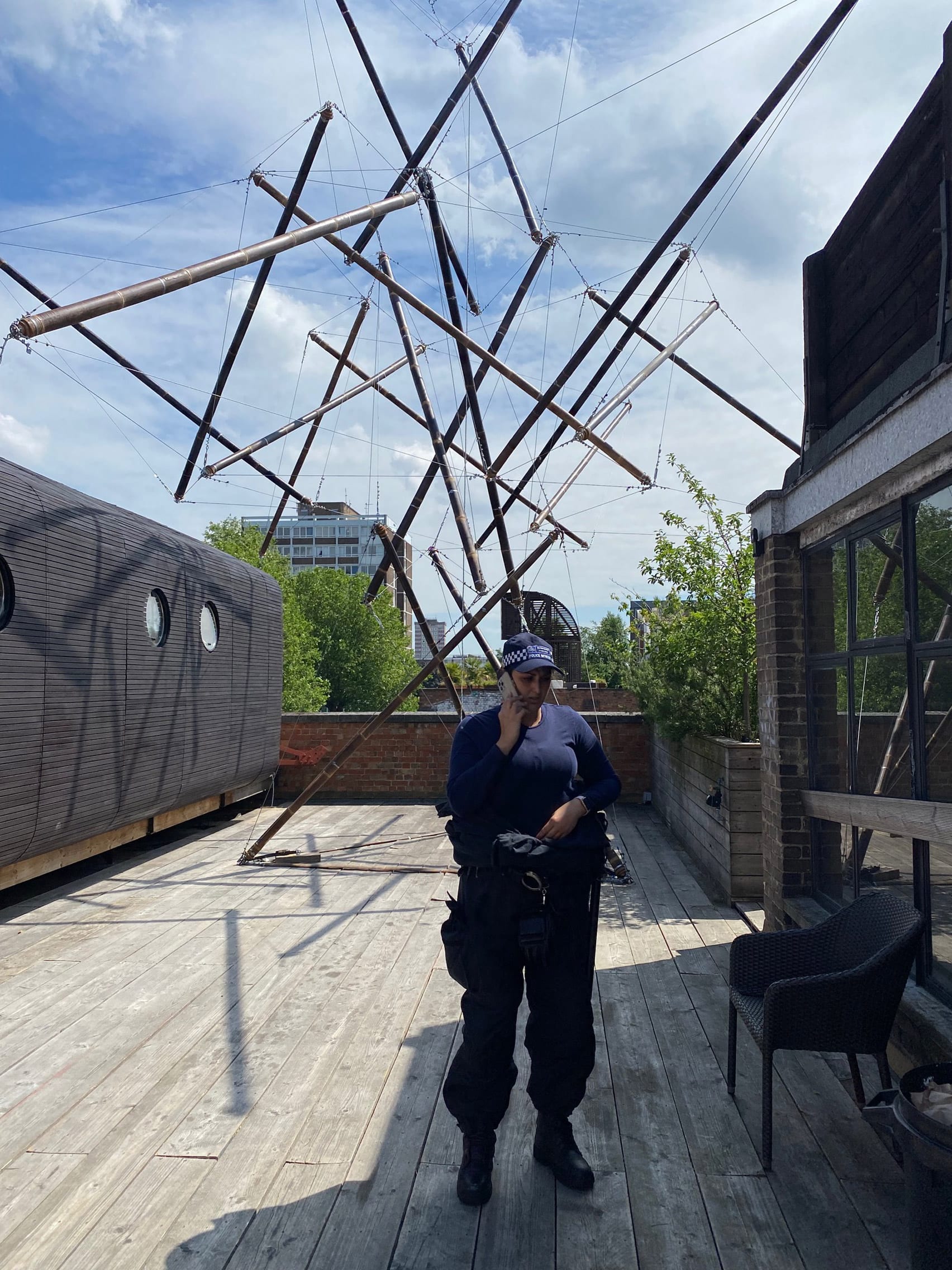 Above: police have raided the building that hosts the Antepavilion. Top image: an installation on its roof is at risk of removal
Above: police have raided the building that hosts the Antepavilion. Top image: an installation on its roof is at risk of removal
"I spent the night in jail," he said Russell Gray, owner of the canalside building. "They smashed their way in through various doors and smashed the place up."
Gray was arrested when he arrived at the building during the raid following a call from his son, who was also arrested along with a tenant of the building.
They were released the next day but Gray said police told him they would return to dismantle the rooftop structure. "They're saying they're gonna come and take it down," he told Dezeen.
The structure, called All Along the Watchtower, is a reusable, lightweight "tensegrity" structure made of bamboo poles and steel cables designed by a collective called Project Bunny Rabbit.
The group developed the towers for Extinction Rebellion, which used them to block access to Broxbourne printworks in Hertfordshire last year. Protesters erected the "beacons" and then climbed into them.
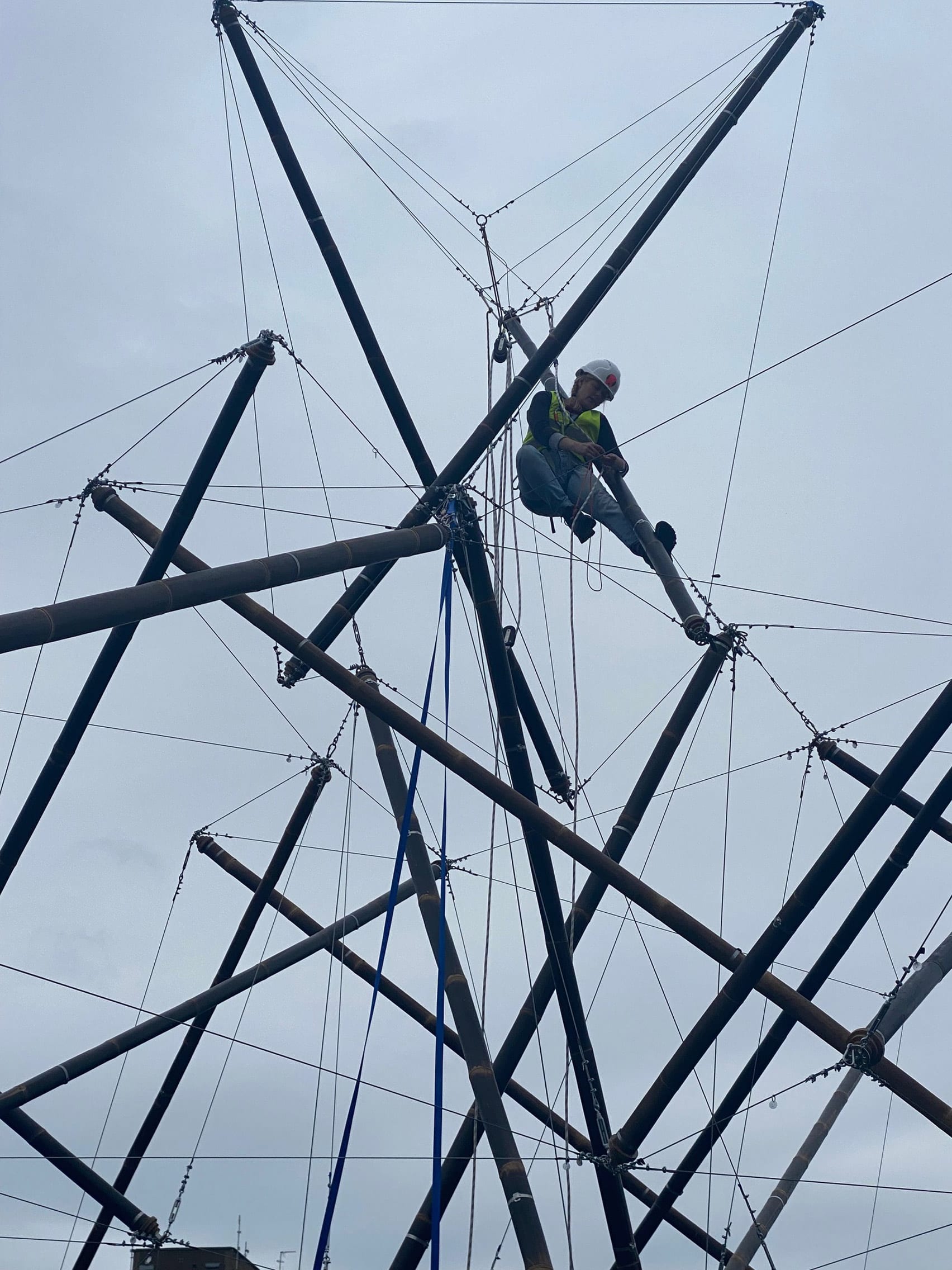 The structure is based on protest "beacons" used by Extinction Rebellion
The structure is based on protest "beacons" used by Extinction Rebellion
Consisting of several linked tensegrity towers, the Hoxton Docks structure had been completed earlier this week by volunteers attending workshops at the canalside arts building.
The workshops were organised in collaboration with Extinction Rebellion. "People could be taught how to make the components and how to assemble the structures," Gray explained.
"They got a lot of volunteers. Obviously, climate change mobilizes people like few other things."
However, Gray told Dezeen that the rooftop structure was unrelated to Extinction Rebellion's activities.
"We support is the erection of the structure, the workshop, training people to do construction and craftsmanship," he said. "It doesn't extend to any endorsement of Extinction Rebellion, on whom I'm neutral at best."
"We are an architecture prize," he added. "We weren't prepared to become a propaganda tool for these Extinction Rebellion people."
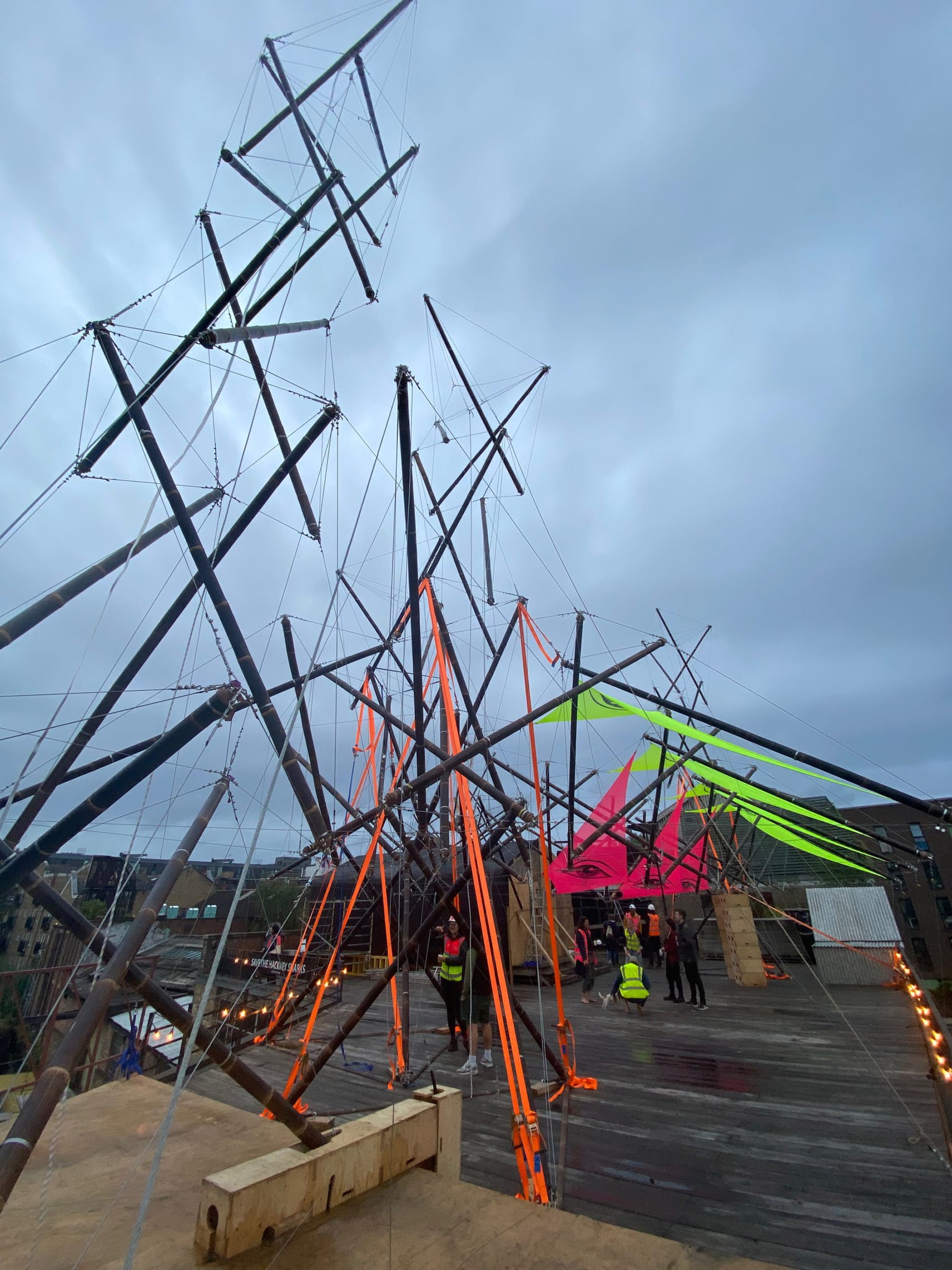 Work on the structure had just been completed when the police raided Hoxton Docks
Work on the structure had just been completed when the police raided Hoxton Docks
Police raided the building after receiving intelligence that the protest group planned to use tensegrity structures again this weekend, according to the Guardian.
Police told the newspaper they had "taken proactive action to prevent and reduce criminal disruption which we believe was intended for direction at media business locations over the weekend”.
But Extinction Rebellion said: "As far as we are aware, those arrested have no connection to the protest last September or to Extinction Rebellion."
In September, seventy activists were arrested at Broxbourne, a town north of London, after erecting and climbing into the tensegrity structures.
They were protesting against media mogul Rupert Murdoch, whose newspapers are among those printed at the plant.
 Tensegrity structures consist of separate structural elements held in place by tension
Tensegrity structures consist of separate structural elements held in place by tension
At the time, Extinction Rebellion said the protest aimed "to expose the failure of these corporations to accurately report on the climate and ecological emergency, and their consistent manipulation of the truth to suit their own personal and political agendas."
This year's Antepavilion competition called for temporary or mobile structures that would not fall foul of planning rules. This follows an ongoing battle between Gray and Hackney Council, which served an injunction on last year's floating sharks installation.
"Tensegrity was an experimental construction method was much explored in the 1960s and 1970s," he explained.
"They just make striking structures because they're lightweight. They're open. They're basically a bunch of steel tension wires. It seemed like an ideal thing to do."
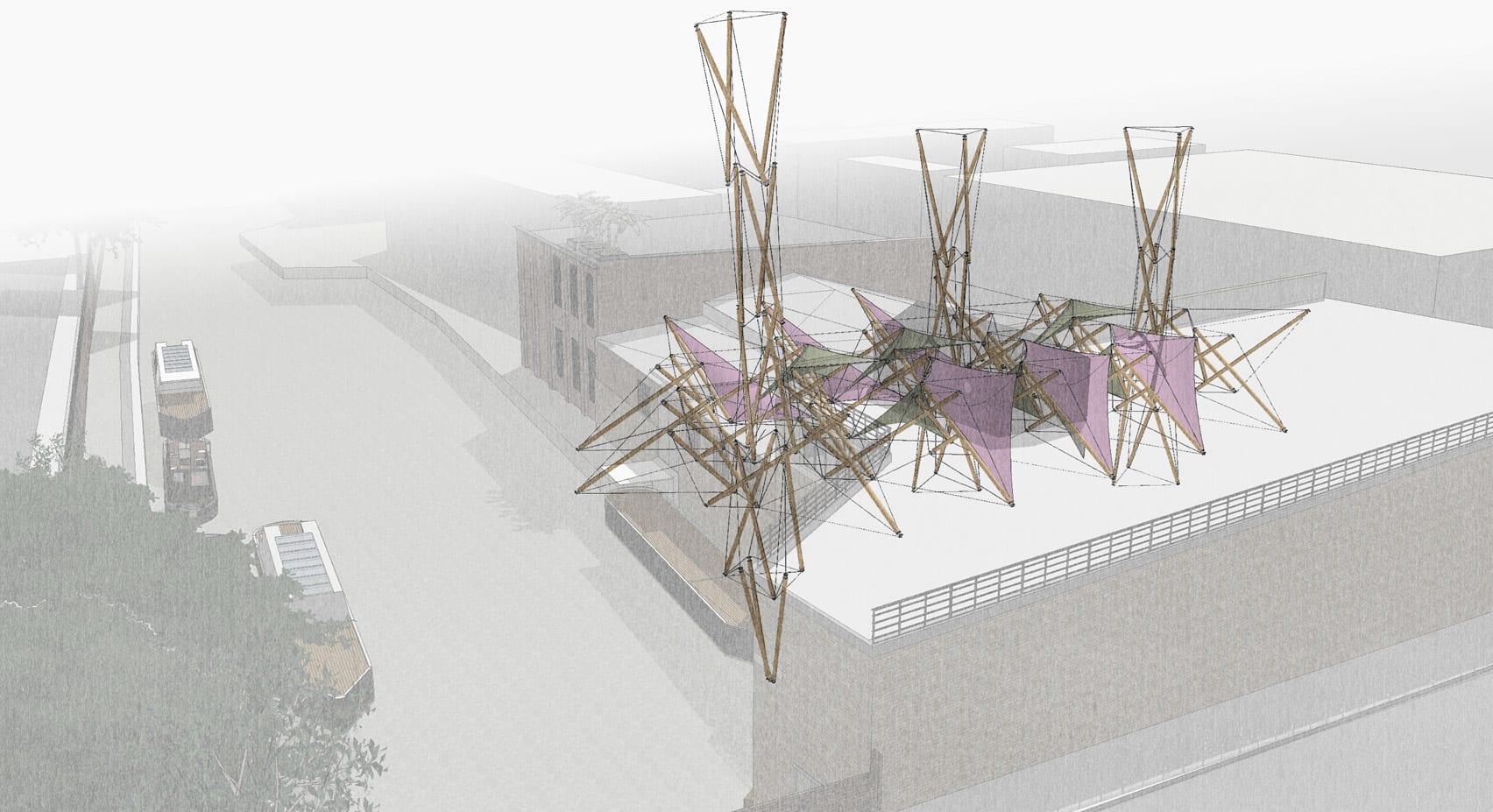 Diagram of the tensegrity structure
Diagram of the tensegrity structure
The Extinction Rebellion protest structures were praised by Dezeen columnist Phineas Harper, who last year said they were "worthy contenders for the Stirling Prize."
"Architecture rarely makes the headlines, yet all of a sudden these two structures were splashed across frontpages at the centre of a national debate – put there not by starchitects but by environmentalists," he wrote.
"The towers were innovative, eye-catching, ecologically sound and socially purposeful – a combination contemporary practice rarely achieves. They are the most gutsy architecture of the year."
"Why are the police confiscating an art installation?" said Alanna Byrne of Extinction Rebellion in response to the raid.
"Under what powers are they arresting employees of an art space and people who live in the building? "This is a vast overreach of police powers, a major infringement on the lives of those arrested, and suppression of freedom of expression."
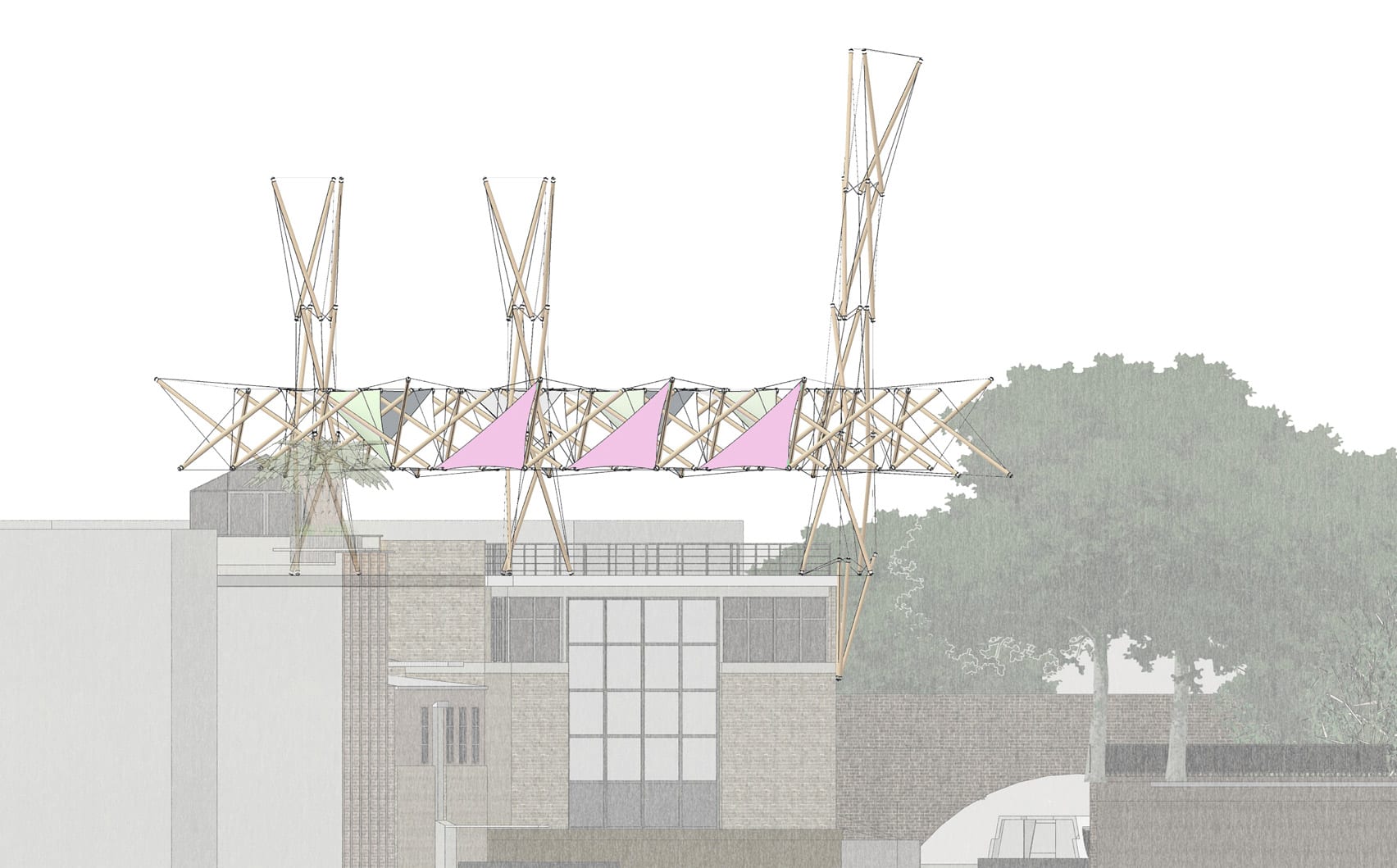 Police raided the building after hearing that Extinction Rebellion were planning more protests using tensegrity "beacons"
Police raided the building after hearing that Extinction Rebellion were planning more protests using tensegrity "beacons"
"Would this be happening if Extinction Rebellion wasn’t holding Rupert Murdoch and the rest of the billionaire owned press to account?"
The structure was erected as a "special early summer commission" ahead of the winner of this year's Antepavilion competition.
The winner, AnteChamber by Studio Nima Sardar, will be built later this year.
The photographs are by Russell Gray and the renderings are courtesy ofAntepavilion.
The post Antepavilion building "smashed up" and staff arrested in police raid on Extinction Rebellion workshops appeared first on Dezeen.
#pavilions #all #architecture #news #uk #london #england #antepavilion

There are no comments yet.